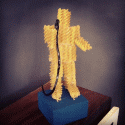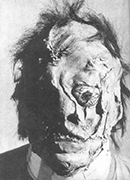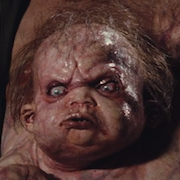|
this isn't even an intro course, like wtf do ppl not learn how to use a loving microscope in grade school?
|
|
|
|

|
| # ? Apr 19, 2024 12:07 |
|
Well, you're the dumbass in community college.
|
|
|
|
hope they're bolted to the tables. one of them could net you some tasty crack!
|
|
|
|
Yeah spent a whole class on it even in my microbiology class. I think its a good excuse to waste time for the teacher.
|
|
|
|
Did you label the ribosomes?
|
|
|
|
ok smart guy, explain the difference between DIC and Phase contrast
|
|
|
Fusilli Jerry posted:this isn't even an intro course, like wtf do ppl not learn how to use a loving microscope in grade school? welcome to stem. every biology class you take will contain a refresher on microscopy. because you're going to use all sorts, and there can be variation for proper use among manufactures. killmeimmafailure posted:Did you label the ribosomes? what's a ribosome? i can't translate nerd speak. Dr. Pancakes posted:Yeah spent a whole class on it even in my microbiology class. I think its a good excuse to waste time for the teacher. and there is always one person who habitually breaks slides.
|
|
|
|
|
Lmbo community college huh? What happened they misplace your application to devry or something? loving idiot lmbo
|
|
|
|
Grem posted:Well, you're the dumbass in community college.
|
|
|
|
Work that wet-mount slide action. Did ya get to use the balance beam with 3 weight sliders on it?
|
|
|
|
u can finally j-o now!
|
|
|
Wicker Man posted:Work that wet-mount slide action. somebody pozed the neg centrifuge.
|
|
|
|
|
Grem posted:Well, you're the dumbass in community college. Ruthless.
|
|
|
|
Y'all don't remember the endoplasmic reticulum??
|
|
|
|
Perhaps the most fundamental distinction between differential interference contrast and phase contrast microscopy is the optical basis upon which images are formed by the complementary techniques. Phase contrast yields image intensity values as a function of specimen optical path length magnitude, with very dense regions (those having large path lengths) appearing darker than the background. Alternatively, specimen features that have relatively low thickness, or a refractive index less than the surrounding medium, are rendered much lighter when superimposed on the medium gray background. The situation is quite distinct for differential interference contrast, where optical path length gradients (in effect, the rate of change in the direction of wavefront shear) are primarily responsible for introducing contrast into specimen images. Steep gradients in path length generate excellent contrast, and images display a pseudo three-dimensional relief shading that is characteristic of the DIC technique. Regions having very shallow optical path slopes, such as those observed in extended, flat specimens, produce insignificant contrast and often appear in the image at the same intensity level as the background. Phase contrast lacks the pronounced azimuthal effect inherent in differential interference contrast, which is manifested by asymmetrical orientation of the beamsplitting Nomarski (or modified Wollaston) prisms with respect to the microscope optical axis and polarizers. The absence of orientation effect occurs because the annular phase plate in a phase contrast microscope condenser (Figure 2(b)) is rotationally symmetric through 360 degrees and illuminates the specimen evenly from all angles. As a result, the phase contrast image is independent of orientation and not subject to rotational-dependent contrast effects. For many specimens imaged in differential interference contrast, a prerequisite orientation in order to achieve maximum contrast (either parallel or perpendicular to the shear axis) restricts freedom of specimen rotation, especially for linear or closely-spaced periodic structures. Azimuth contrast effects in differential interference contrast can be utilized to advantage by equipping the microscope with a 360-degree rotating circular specimen stage. Originally designed for observations in polarized light microscopy, circular stages enable the operator to rotate the specimen with respect to the prism shear axis in order to maximize or minimize contrast effects for selected specimen features. Contrast in DIC microscopy achieves a minimum level for linear phase specimens that extend along the direction of shear, but can be varied significantly by rotating the stage by a few degrees. Non-linear specimens, such as cells, tissue sections, particles, and amorphous polymers, do not display a significant azimuth effect in DIC, and can usually be satisfactorily imaged in a variety of orientations. The correlation between image contrast and specimen orientation in differential interference contrast can often be used to advantage in the investigation of extended linear specimens. For example, the highly ordered structures in diatom frustules and similar specimens can overlap, leading to confusing images when observed in phase contrast and similar contrast-enhancing techniques. By capturing images at several orientations, DIC microscopy is often able to present a more clear understanding of the complex morphology present in many extended, linear specimens. In addition, when optical sectioning methodology is coupled to azimuth-specific imaging, differential interference contrast microscopy can often reveal features that are difficult, or impossible, to distinguish using alternative techniques. The halo and shade-off artifacts that plague the phase contrast optical system are largely absent in differential interference contrast images. In positive phase contrast, specimen features with a higher refractive index than the surrounding medium are encircled with a bright fringe (halo) that often obscures edge detail. Although halos can be suppressed to a limited degree by configurational modifications to the objective phase plate design, they cannot be eliminated entirely. In some cases, differential interference contrast images suffer from excessive brightness along edges having very steep optical gradients, but this effect usually occurs when bias retardation values are too low, and can be circumvented by proper adjustment of the Nomarski prism (or de SÚnarmont compensator polarizer) position. The presence and severity of halos in phase contrast is dependent, in part, on the refractive index difference between the specimen and the surrounding medium. Often, phase contrast specimens contain a wide variety of structures that display wildly fluctuating refractive indices, which together yield complex images. Areas having a lower refractive index than the surrounding medium exhibit dark halos as opposed to the bright halos that can be observed surrounding higher refractive index features. Halos arise because of the configurational parameters of the phase contrast microscope optical system. A small portion of incident light deviated by the specimen passes through the objective phase plate due to the spherical nature of diffracted wavefronts. Smaller specimen features give rise to larger diffraction angles, but large extended structures can produce diffracted wavefronts having shallower angles that often fall within the objective aperture zone occupied by the phase plates. An advantage of phase contrast over DIC is the ability to successfully image dichroic and birefringent specimens. Because differential interference contrast optical systems rely on polarized light to establish the orientation of wavefront fields, differential absorption of ordinary and extraordinary waves by a birefringent or dichroic specimen leads to confusing images. Phase contrast does not require the use of polarized light, and is free of optical disturbances generated by birefringent specimens. One of the primary concerns pertaining to birefringence artifacts in differential interference contrast microscopy arises from the widespread use of plastic tissue culture vessels. Stress inherent in the molded polymer vessel structure produces excessive birefringence that depolarizes light and confuses the interpretation of DIC images. Thus, living cells grown in these containers cannot be imaged satisfactorily with differential interference contrast and, instead, are usually observed and photographed with phase contrast or Hoffman modulation contrast optical systems. The major source of errors in examining birefringent specimens with differential interference contrast microscopy arises from the necessity of using polarized light, as discussed above. In birefringent specimens, the polarized orthogonal (ordinary and extraordinary) wavefronts are absorbed to different degrees, depending upon their orientation with respect to anisotropic molecules within the specimen. As a result, when the orthogonal wavefronts are recombined in the objective Nomarski prism and pass through to the analyzer, they interfere with different intensity. The final image, therefore, is not only a function of the optical path difference experienced by the two wavefronts (normally a critical factor in DIC), but also the differential amplitudes of the two beams induced by the specimen. The effect on images is similar to a microscope configuration in which the transmission axes of the polarizer and analyzer are not perfectly perpendicular (in effect, slightly uncrossed). Because phase contrast does not rely on polarized light, the technique is largely free of artifacts induced by birefringent specimens. Harald fucked around with this message at 01:59 on May 19, 2015 |
|
|
|
hahah i took a 200-something level anatomy course at a community college over the summer once and we spent a week learning what all the parts of the microscope were called people struggled hard to remember them all there were at least 8 credits' worth of bio prereqs for the class chernobyl kinsman fucked around with this message at 02:07 on May 19, 2015 |
|
|
|
|
Most public universities have acceptance rates over 80-90% if they're not top tier, should just go to your state U Fusilli Jerry.
|
|
|
|
At least you'll be able to see your dick, now, op. ZING
|
|
|
|
e: son of a loving bitch quote is not edit i belong in community college
|
|
|
|
|
get it like a weiner so small u need a microscope to j-o
|
|
|
|
social vegan posted:get it like a weiner so small u need a microscope to j-o I got it
|
|
|
|
Harald posted:I got it pretty fun joke right?
|
|
|
|
social vegan posted:pretty fun joke right?
|
|
|
|
Harald posted:i was actually going to make a joke to the same effect but you got to it first I'll give u half the internet cred i get for the joke
|
|
|
|
Kuato posted:Most public universities have acceptance rates over 80-90% if they're not top tier, should just go to your state U Fusilli Jerry. i already did the 'real college' thing & got the degree, but as it turns out, liberal arts is just not that lucrative...so i need some kind of trade/profession thing and my local community college provides that
|
|
|
|
taught bio labs for a 4 year state U while getting my master's, can confirm that this is pretty run of the mill and that at least 70% of my students didn't know poo poo about microscopes on day one but were all like "i got top ten percent in my school, all As and im gonna be a doctor hurrrr" and cried about the Bs and Cs i gave them while they zoomed in too far with the oil immersion lens (without using oil) and broke their slides or as i liked to call it, going in dry I don't miss grad school
|
|
|
|
*grinds the 100X objective into the slide like a trucker high on meth*
|
|
|
Harald posted:*grinds the 100X objective into the slide like a trucker high on meth*
|
|
|
|
|
Why are you in community college, even I made it into a large and respected university
|
|
|
|
Harald posted:i was actually going to make a joke to the same effect but you got to it first unlike the op's penis which no one is getting to
|
|
|
|
I only use microscopes with a computer so I don't really know how to use them
|
|
|
|
Fusilli Jerry posted:i already did the 'real college' thing & got the degree, but as it turns out, liberal arts is just not that lucrative...so i need some kind of trade/profession thing and my local community college provides that My undergrad was liberal arts ended up getting a marginally more useful masters in something else. I wouldn't suggest anyone get a liberal arts degree; pretty radical notion I know
|
|
|
|
what are you studying, op?
|
|
|
|
Harald posted:what are you studying, op? Microscopes. You should join this guy in community college lol.
|
|
|
|
Grem posted:Microscopes. You should join this guy in community college lol. 
|
|
|
|
are you using the microscope to look at your tiny dingle, op? efb three weeks ago
|
|
|
|
Firstborn posted:are you using the microscope to look at your tiny dingle, op? Dude would need a telescope to see that actually
|
|
|
|
Kuato posted:Dude would need a telescope to see that actually lol we'll see who has the last laugh when he gets a bachelo... uh certificate in Microscopenomics
|
|
|
|
ElectricSheep posted:taught bio labs for a 4 year state U while getting my master's, can confirm that this is pretty run of the mill and that at least 70% of my students didn't know poo poo about microscopes on day one but were all like "i got top ten percent in my school, all As and im gonna be a doctor hurrrr" and cried about the Bs and Cs i gave them while they zoomed in too far with the oil immersion lens (without using oil) and broke their slides or as i liked to call it, going in dry
|
|
|
|

|
| # ? Apr 19, 2024 12:07 |
|
Harald posted:Perhaps the most fundamental distinction between differential interference contrast and phase contrast microscopy is the optical basis upon which images are formed by the complementary techniques. Phase contrast yields image intensity values as a function of specimen optical path length magnitude, with very dense regions (those having large path lengths) appearing darker than the background. Alternatively, specimen features that have relatively low thickness, or a refractive index less than the surrounding medium, are rendered much lighter when superimposed on the medium gray background. same
|
|
|






















